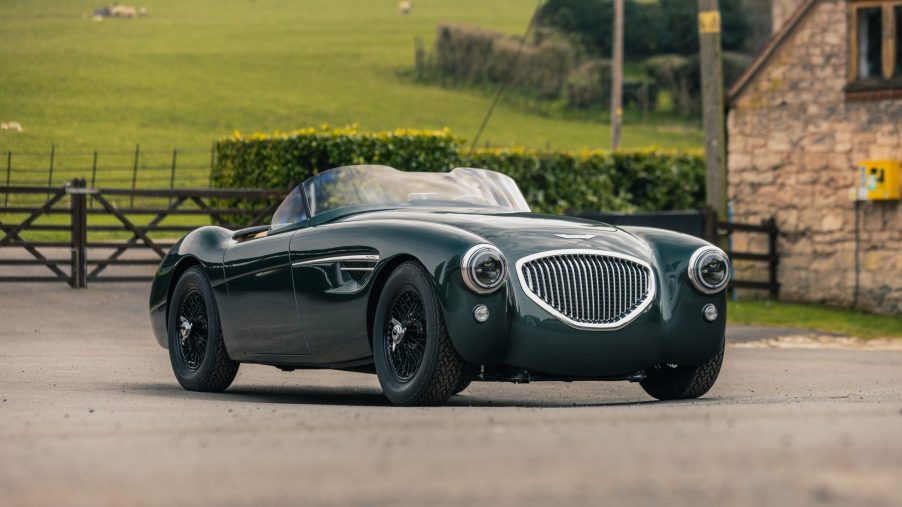
Caton’s Ultimate Austin-Healey 100: A $515K Restomod ‘Bargain’
Austin-Healey 100 restomod article highlights:
- The Austin-Healey 100 served as the mid-level British convertible sports car in the 1950s
- A new UK shop, Caton, is building a limited run of restomods based on the early four-cylinder BN1 model
- Although the Healey by Caton costs roughly $515K, some original Austin-Healey 100 models are worth almost double that
Porsche 911s aren’t the only beloved classic cars receiving high-price restomod builds these days. Vintage Mini Coopers, Range Rovers, Alfas, even E30 M3s—if you have the cash, a dedicated restomod shop likely exists. And as of recently, this pool includes an Austin-Healey business. But while Caton’s Austin-Healey 100 restomods aren’t cheap, even with six-figure price tags, they’re also arguably bargains.
The first ‘Big Healey,’ the Austin-Healey 100 is a classic British sports car icon
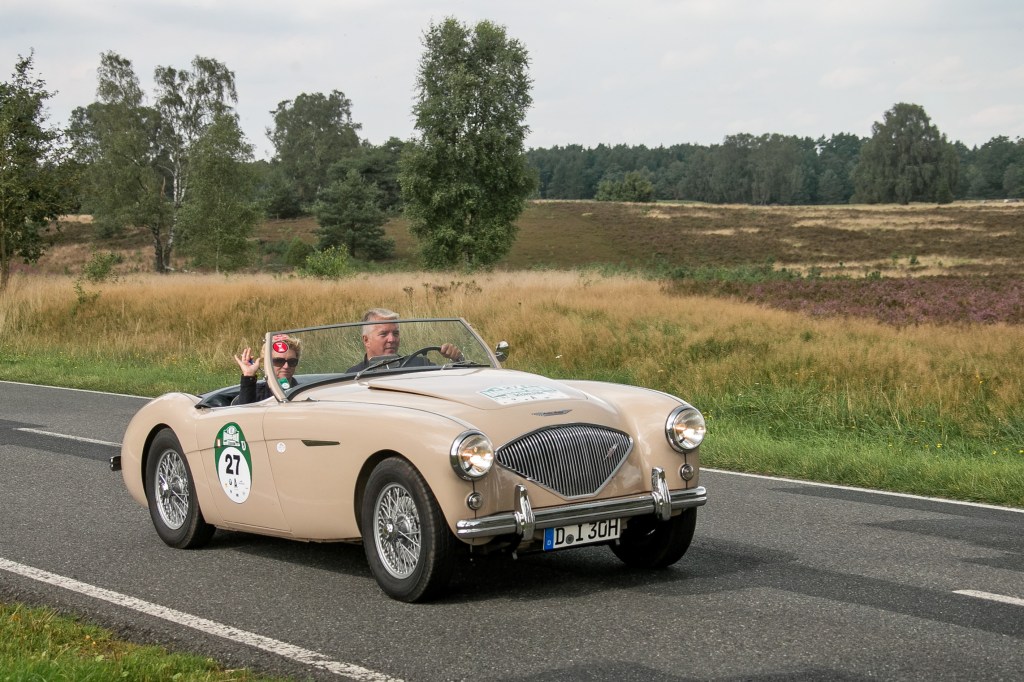
By 1952, British automakers were exporting sports cars as quickly as they could make them. The MG TC was winning races, while the Jaguar XK120 and XK140 were busy breaking speed records. However, while the cheap and expensive ends of the roadster market were well represented, there weren’t any middle-of-the-road models. At least, not until the Austin-Healey 100 came along.
Originally, British designer and racer Donald Healey called his roadster ‘100’ after its supposed 100-mph top speed. And to get the 100 going that fast, Healey used parts from the contemporary Austin A90. This had the happy benefit of keeping the price relatively low. However, it got even lower once Austin decided to get directly involved. So, the sports car got a slight name change and the Austin-Healey 100 was born, Hagerty explains.
The first Austin-Healey 100, the BN1, had a 90-hp 2.7-liter four-cylinder engine linked to a three-speed manual. That doesn’t sound like much, but it was enough to get the 2100-ish-pound lithe roadster to 106 mph. Its 11.2-second 0-62 mph time was also decent in 1952. Plus, while its low ride height and relatively-narrow body meant the exhaust scraped on big bumps, they made for excellent handling. But this was just the beginning.
In 1955, Austin-Healey gave the 100 an aluminum body, four-speed manual, four-wheel discs, upgraded suspension, and tuned the engine to 130 hp. The resulting 100 S won its class at the 12 Hours of Sebring and took 1st and 2nd place at the Mille Miglia. While the 1956 BN2 model didn’t have all those upgrades, it did have a four-speed transmission. And the 100 M—‘M’ for ‘Le Mans’—offered a 110-hp engine, stiffer suspension, and a fold-down windshield.
These early Austin-Healey 100 models are often called ‘100-4’ or ‘100/4’ today because, after 1956, the roadster got a 2.6-liter inline-six and a new chassis. Then, in 1959, the Austin-Healey ‘100-6’ morphed into the 3000. And because the smiling Sprite had joined the family by this point, these bigger roadsters became known as the ‘Big Healeys.’
From the makers of the Jaguar D-Type and XKSS Continuation comes the Healey by Caton
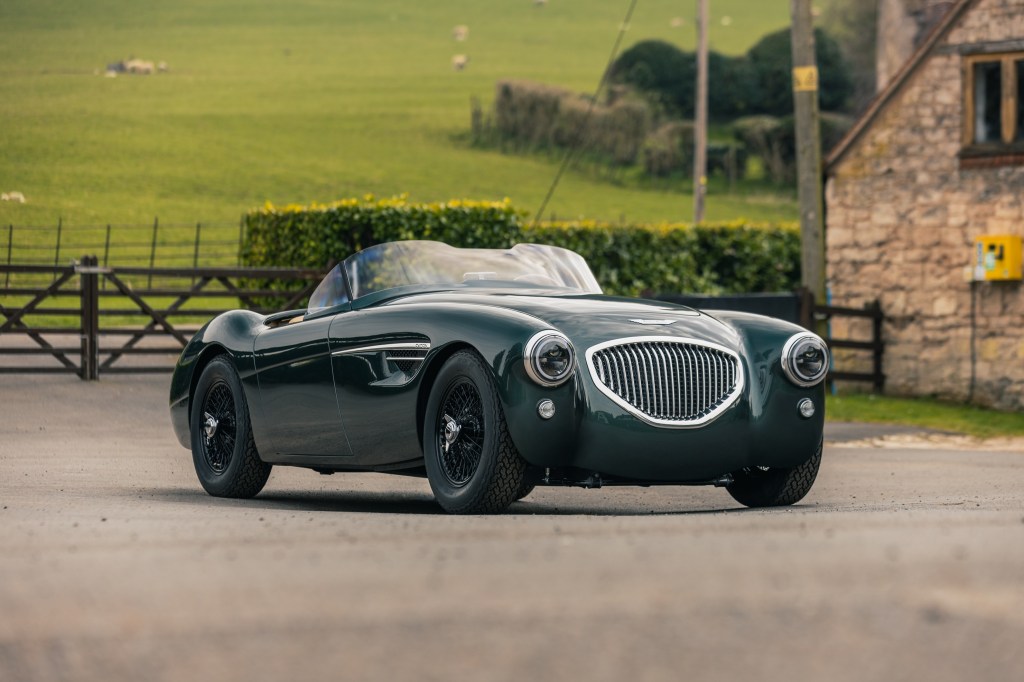
Caton Austin-Healey 100 restomod | Caton 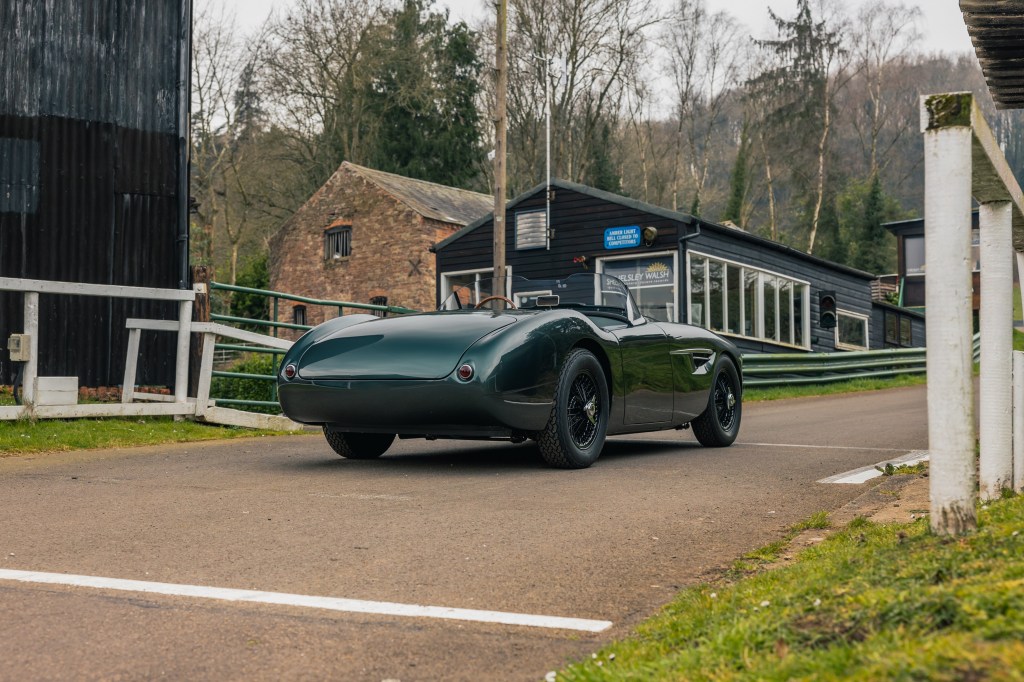
Caton Austin-Healey 100 restomod rear 3/4 | Caton 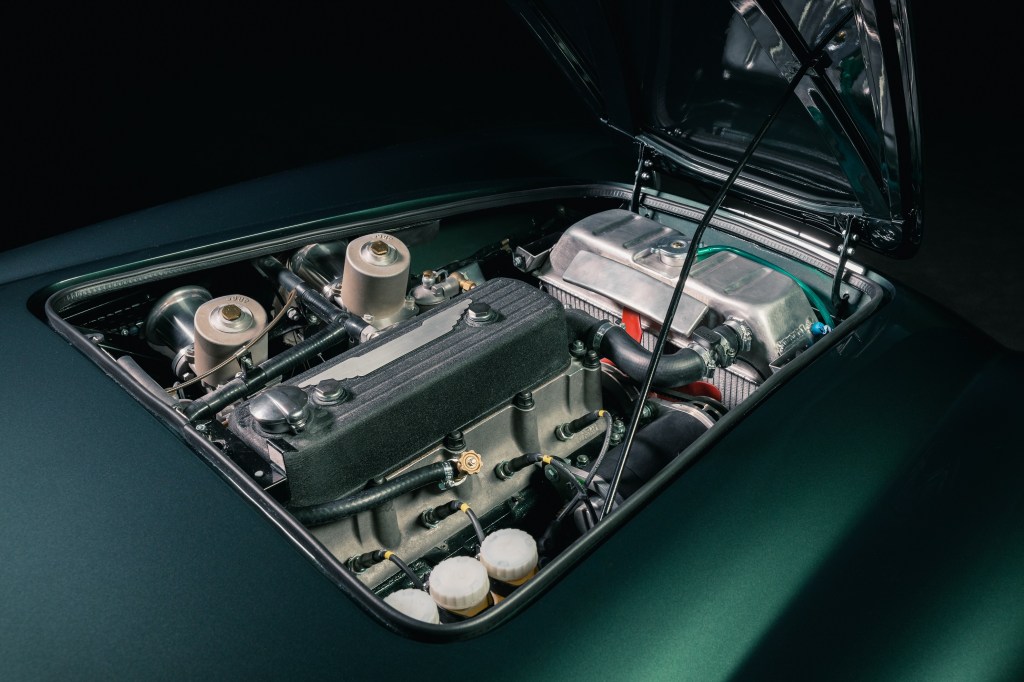
Healey by Caton engine | Caton 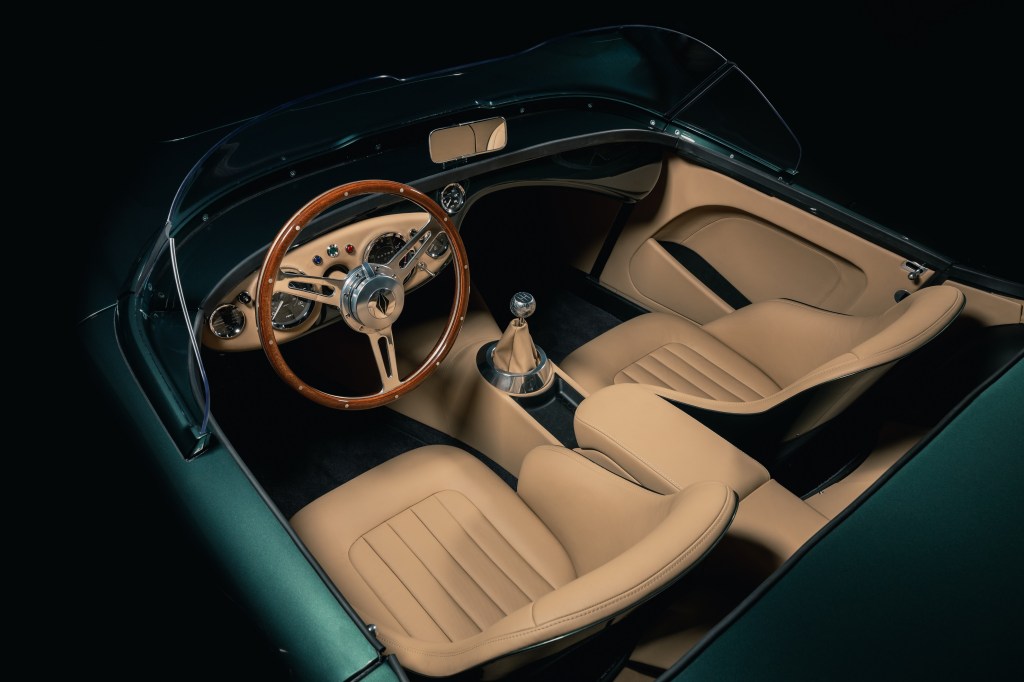
Caton Austin-Healey 100 restomod cabin | Caton
Although the later six-cylinder models were more powerful, Donald Healey preferred the easier-to-modify four-cylinder ones, Hagerty reports. So, UK company Caton’s new restomod, the ‘Healey by Caton,’ is based on the BN1. But it’s so much more than just a restored roadster. Though that’s to be expected since Caton is part of the Envisage Group. That’s the same company that handled the recent Jaguar D-Type and XKSS Continuation cars.
First, Caton strips the donor 100 BN1 down and has Austin-Healey specialist J.M.E. reinforce the chassis. The shop leaves the suspension relatively unchanged. However, it does install custom rose-jointed stabilizer bars all around and puts adjustable coilovers with lever arm dampers in front. Also, it replaces the drums with modern discs.
After addressing the chassis, Caton tackles the Austin-Healey 100 BN1’s body. Former McLaren designer Darryl Scriven drafted a shape without bumpers, handles, or visible trunk hinges, and reworked the grille and fenders, MotorTrend explains. The new hand-formed aluminum parts join the reinforced front and rear bulkheads. And an anti-corrosion protective layer keeps rust at bay.
Next comes the engine. It’s a 3.0-liter four-cylinder that’s based on the original Austin-Healey 100 block—it even has twin SU H8 carburetors. However, those carburetors are larger than stock. In addition, the engine has a racing camshaft, steel crankshaft, side-exit performance exhaust, high-compression pistons, and upgraded bearings. So, rather than 91 hp, the restomodded Healey has 187 hp and 195 lb-ft of torque. Plus, a new five-speed manual.
Besides more gears, the new transmission has a narrower tunnel than the original. Thus, Caton’s Austin-Healey 100 restomod has a roomier interior. It has more legroom, too, thanks to a new pedal box. The roadster lacks a roof, but it does have a wrap-around windshield and leather upholstery from famed Scottish supplier Bridge of Weir. And while Caton’s Healey doesn’t have ABS, power steering, or infotainment, the interior features two USB outlets and enlarged door pockets, MT notes.
An original Austin-Healey 100 S is worth more than Caton’s $515,000 restomod
You’ll have to get in line quickly if you want one of Caton’s Austin-Healey 100 restomods. It’s only making 25 examples and production starts after April 23, 2022. But as noted earlier, these roadsters aren’t cheap. Including the cost of a donor BN1, the Healey by Caton costs roughly $515,000.
Now, for a restored BN1, that’s more than a lot of money. Even a pristine one is a $120,000 car at best, Hagerty says. However, Caton’s car isn’t a regular BN1: it’s arguably closer in spirit to the 100 S. A fair-condition 100 S is a $610,000 car, Hagerty reports, while a pristine one is worth over $1 million.
Viewed in that light, much like Gunther Werks’ 993 Speedster, this $515,000 Austin-Healey 100 is kind of a bargain. Whether or not it’s worth it, though, is up for the potential buyers to decide.
Follow more updates from MotorBiscuit on our Facebook page.


